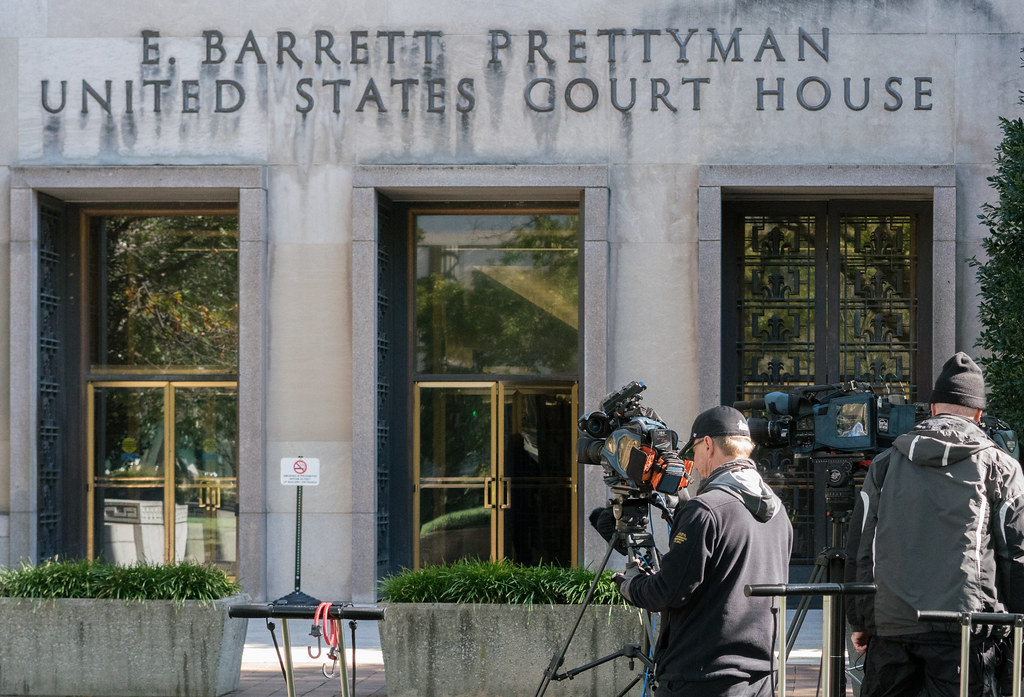The Justice Department Wants to Drop Flynn’s Case. Can the Judge Say No?
Precedent seems to require the dismissal of the Michael Flynn case, but Judge Emmet Sullivan can ask questions first.

Published by The Lawfare Institute
in Cooperation With

On May 7, the Justice Department moved to dismiss the criminal charges against former National Security Adviser Michael Flynn, who pleaded guilty to one count of lying to federal investigators about, among other things, his contact with the Russian ambassador prior to President Trump’s inauguration. Under Federal Rule of Criminal Procedure 48(a), the government may dismiss an indictment, information or complaint “with leave of the court.” And this has a lot of people wondering today whether Judge Emmet G. Sullivan might refuse to grant consent to let the case go.
Sullivan has been dealing with Flynn’s machinations in his courtroom for more than two years. Some commentators understandably regard the Justice Department’s current conduct as an unacceptable bait and switch, but precedent from the Supreme Court and U.S. Court of Appeals for the D.C. Circuit leaves little room for the judge presiding over the Flynn case to decline to grant the government’s motion.
In 1977, in Rinaldi v. United States, the Supreme Court addressed a district court’s decision to deny a Rule 48(a) motion. The defendant, who had been convicted of robbery in state court, was tried and convicted for offenses arising out of the same robbery in federal court. The Justice Department filed a Rule 48(a) motion to dismiss the federal charges, but the district court refused to give leave of the court because, the judge wrote, the prosecutor had acted in bad faith by misrepresenting his original authorization from the Justice Department to file charges. (The department’s Petite policy—so named for Petite v. U.S.—counseled against multiple prosecutions for the same act, but the prosecutor had informed the court that the government had decided to vigorously prosecute the federal charges despite the prior state prosecution.) The Supreme Court, however, held that the “salient issue” under Rule 48(a) was not whether the original decision to bring charges was made in bad faith but, rather, whether the government’s motion to dismiss the prosecution was “similarly tainted with impropriety.” Finding no impropriety in the dismissal, the justices held, the court should have granted the motion to dismiss. The Supreme Court emphasized that defendants should benefit from the department’s policy against multiple prosecutions when the department pushes for its application. The Supreme Court’s decision does not explicitly limit the appropriateness of an inquiry into whether the motion is tainted with impropriety only to situations in which a defendant faces multiple repeat prosecutions; it does, however, note that the “principal object” of the “leave of court” requirement is to protect a defendant against prosecutorial harassment.
If that were the only relevant decision, Sullivan might take the view that it doesn’t control this case, but the D.C. Circuit has interpreted Rinaldi very broadly. In 2016, the D.C. Circuit reemphasized that a district court reviews a Rule 48(a) motion “primarily” to protect a defendant from dismissals that are part of a scheme of prosecutorial harassment to repeatedly bring and then dismiss charges. The D.C. Circuit decision, U.S. v. Fokker Services, concerned whether a district court could properly deny a motion to delay a trial under the Speedy Trial Act’s exception for deferred prosecution agreements between the parties “with the approval of the court” because it concluded that the deferred prosecution agreement at issue was too lenient. The D.C. Circuit interpreted this “approval of the court” language in light of separation of powers principles, avoiding an interpretation that would impinge on the executive’s constitutionally rooted power over criminal charging decisions.
As an example of this mode of interpretation, the court pointed to Rule 48(a). Although the language requiring leave of the court could “conceivably” be read broadly, the D.C. Circuit stated, decisions to dismiss pending criminal charges fall within the prosecutorial discretion of the executive branch, and Rinaldi stands for the proposition that Rule 48(a) does not confer “any substantial role” for courts in determining whether charges should be dismissed. Instead, the role of the courts is quite narrow—to protect a defendant against prosecutorial harassment through repeated efforts to file and then dismiss charges. The D.C. Circuit then explicitly rejected the idea that “leave of the court” allows a judge to deny a motion to dismiss based on its belief that the defendant should stand trial or that any remaining charges fail to adequately address the gravity of his alleged conduct.
To deny the government’s current motion, in other words, Sullivan would have to distinguish this case from broad and controlling precedent. Particularly given that the government is seeking to dismiss the charge with prejudice (so that no future Justice Department could refile the case), Sullivan could not reasonably conclude that the dismissal is part of any broad pattern designed to harass the defendant. Instead, he would have to read into the Rule 48(a) standard some broader exception for bad faith dismissals. In the alternative, he could perhaps grant the motion but convert it into a motion to dismiss without prejudice. Ruling on a Rule 48(a) motion in 2019 in United States v. Pitts, Sullivan recognized that “there is a strong presumption in favor of a dismissal without prejudice.” In Pitts, in fact, the judge converted a motion to dismiss without prejudice into one with prejudice. But in that case, he did so because the government was seeking a tactical prosecutorial advantage by dismissing without prejudice—which is not the case here. And so, applying the presumption of no prejudice, Sullivan might conceivably convert the government’s motion to one without prejudice. If Sullivan converted the motion, a future Justice Department would be able to refile the case.
One thing Sullivan clearly has the authority to do, however he rules on the motion, is to demand an explanation. The Justice Department’s position in this case is genuinely unusual. The defendant and the government have gone from agreeing that Flynn is guilty of a crime to agreeing that the charge cannot stand without much significant change in underlying facts. What’s more, no career prosecutor who worked the case was willing to sign the government’s brief seeking dismissal. At a minimum, Sullivan clearly has the authority to call the government lawyers before him to defend and account for their decision to dismiss Flynn’s charges.



-(2)-(2).jpg?sfvrsn=69965fad_5)


